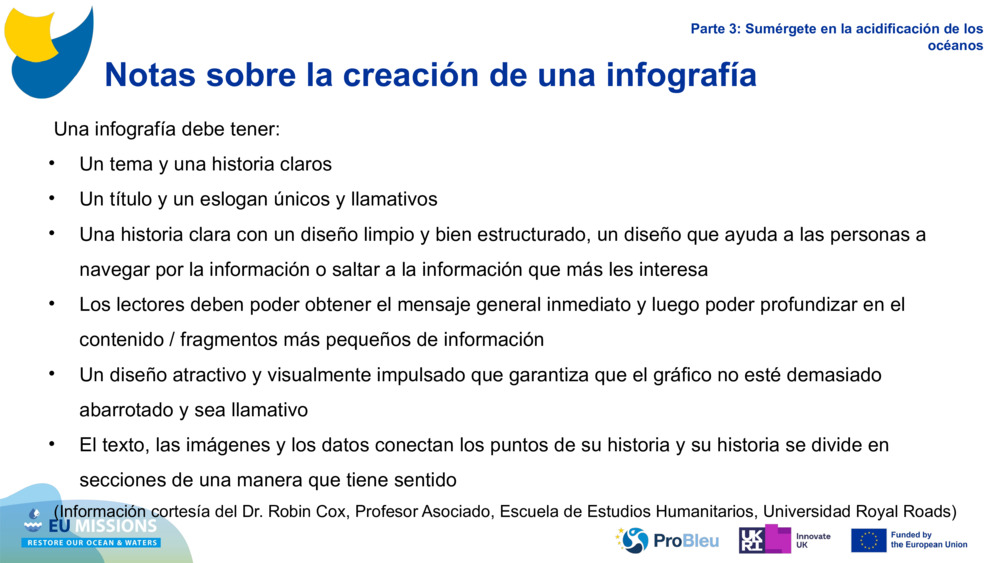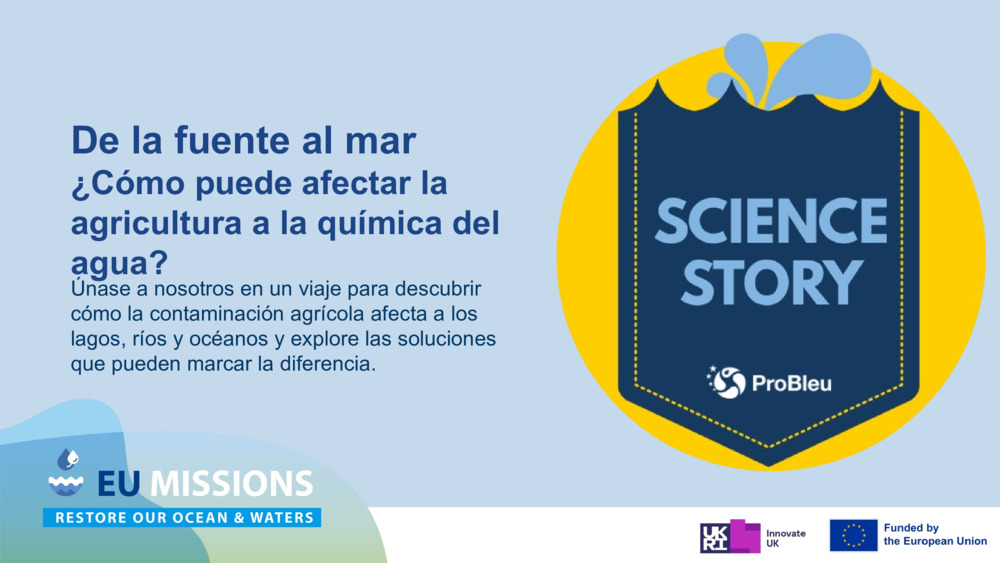Notes on creating an infographic
Notes on creating an infographic
Notes on creating an infographic An infographic should have: A clear subject and story A unique, attention-grabbing title and tagline A clear storyline with a clean and well-structured layout – a layout that supports people browsing the information or jumping to the information that interests them the most Readers should be able to get the immediate over-arching message and then be able to dig deeper into the content/smaller chunks of information An engaging and visually-driven design ensuring the graphic is not too crowded and is eye-catching Text and images and data connect the dots of your story and your story is chunked into sections in a way that makes sense (Information courtesy of Dr. Robin Cox, Associate Professor, School of Humanitarian Studies, Royal Roads University) Part 3: Deep Dive into Ocean Acidification

Presentación de diapositivas original: Water Chemistry with Plymouth Marine Laboratory
Temas: Recursos Sostenibles. Desoxigenación. Océano. Agua dulce. Química Oceánica. Contaminación por nutrientes.
Edades adecuadas: 12. 13. 14. 15. 16. 17. 18.
Palabras clave: Acidez. Acidificación de los océanos. Agricultura. Alcalinidad. Biología. Carbono. Dióxido de carbono. Eutrofización. Hipoxia. Indicadores. Moléculas. Nutrientes. PH. Química. Reacciones químicas.
Presentado por: pml-admin
Número de paquetes que utilizan este contenido: 1
Licensed under CC BY 4.0
Este contenido se ha utilizado en los siguientes paquetes de recursos:
Química del agua con el laboratorio marino de Plymouth
Enseñar sobre química del agua es importante porque conecta temas cien...
Ver la historia de la ciencia